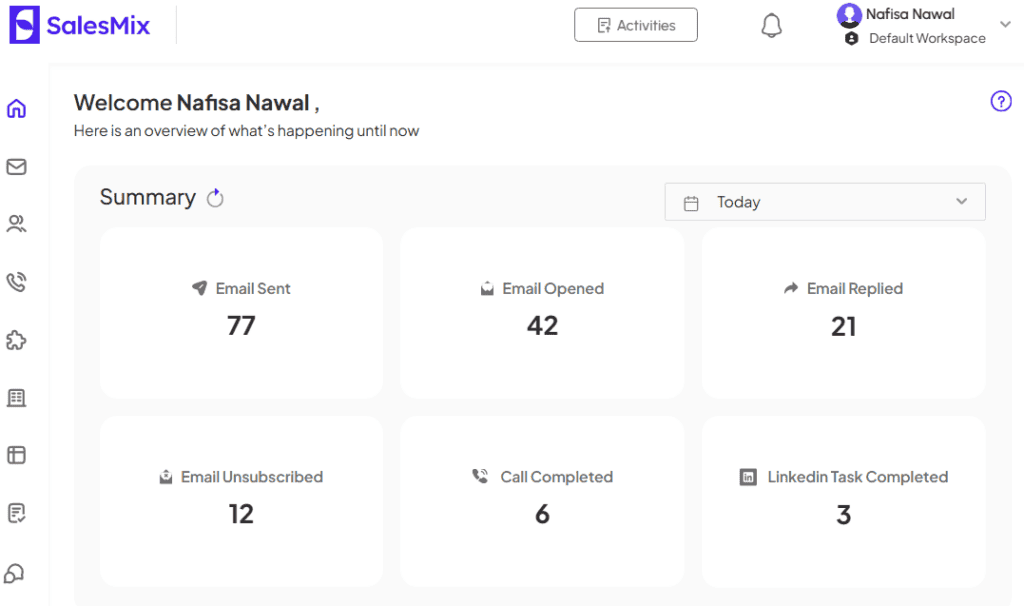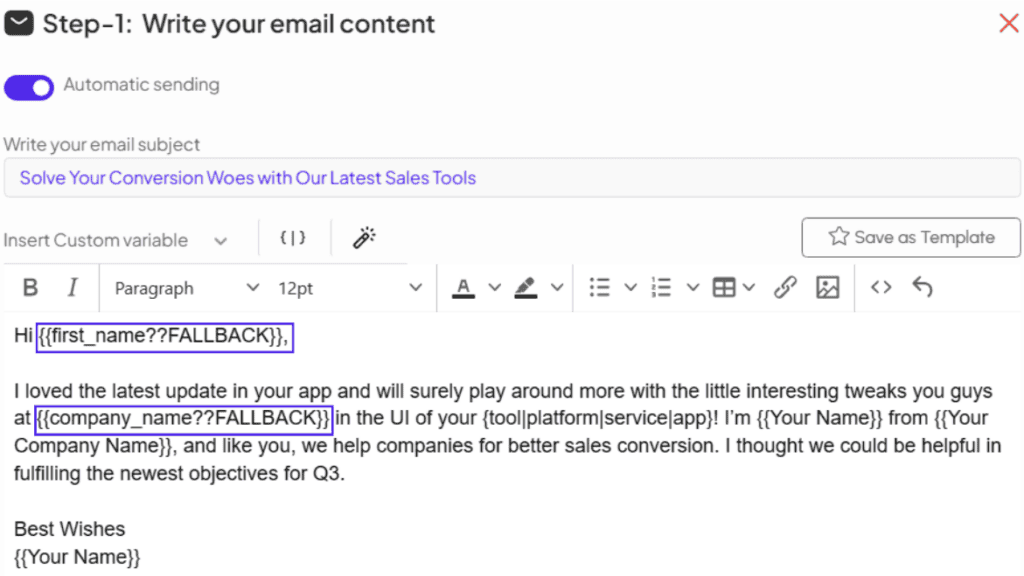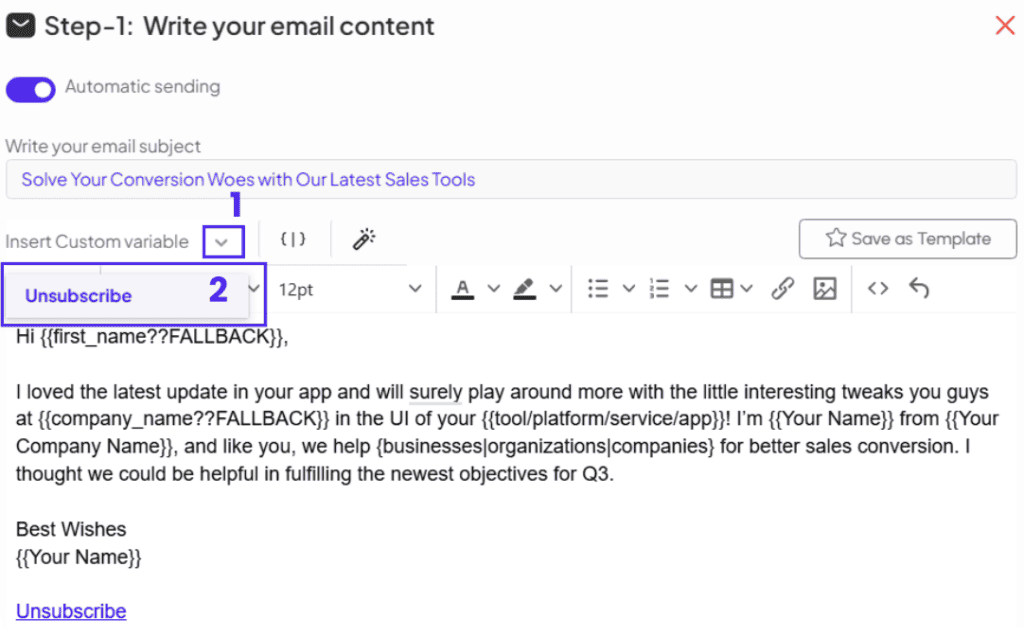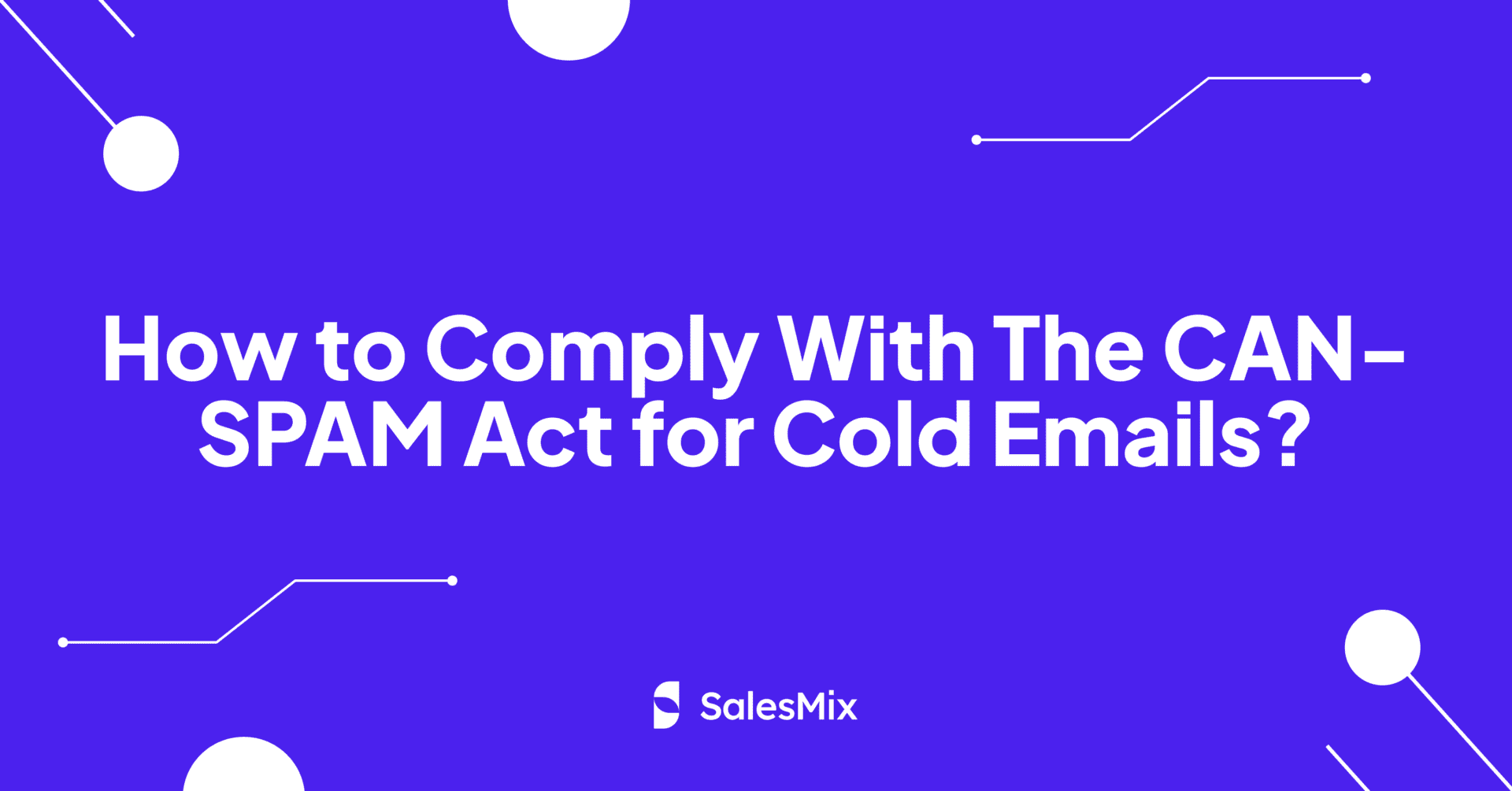Table Of Contents
Finding it challenging to go through the complexities of how the CAN-SPAM Act applies to your cold email campaigns?
Many marketers grapple with understanding and adhering to the requirements set by this pivotal legislation. The fear of penalties and damage to the brand’s reputation is also there.
Ensuring compliance with the CAN-SPAM Act is crucial, not just to avoid legal repercussions but also to maintain trust and professionalism in your communications.
In this article, we will explore practical strategies and best practices for crafting CAN-SPAM-compliant cold emails.
What is The CAN-SPAM Act?
The CAN-SPAM Act is a US federal law that sets the rules for commercial email, establishes requirements for commercial messages, gives recipients the right to have you stop emailing them, and spells out tough penalties for violations.
Enacted in 2003, this act covers all commercial messages, which the law defines as any commercial electronic mail message primarily intended for the commercial advertisement or promotion of a commercial product or service.
What is The Purpose of The CAN-SPAM Act?
The CAN-SPAM Act sets a legal standard for commercial email communications in the United States. The primary aim of this legislation is to protect consumers from misleading, abusive, and unwanted emails.
Specifically, the CAN-SPAM Act focuses on preventing the deception often associated with spam emails. It mandates that email senders must not use false or misleading header information. It also asks that the subject line accurately reflect the content of the message.
This act also empowers consumers to refuse further marketing communications easily. The legislation requires that each email include a clear and conspicuous explanation of how the recipient can opt out of receiving future emails from the sender and implement it within 10 business days if anyone asks to opt-out.
What Types of Messages The CAN-SPAM Act Cover?
The CAN-SPAM act broadly defines commercial messages as any email whose primary purpose is the advertisement or promotion of a commercial product or service. Whether it’s announcing a new product line, new content on your internet website, sending out a newsletter that includes affiliate links, or promoting a special sale, if the email’s primary intent is promotional, it falls under the purview of the CAN-SPAM Act.
Interestingly, the scope of what constitutes “commercial electronic mail messages” has been subject to broader interpretations. Some federal courts have expanded this definition beyond traditional email to include messages sent via social media platforms and even text messages.
Federal Trade Commission (FTC) manages the enforcement of the CAN-SPAM Act and emphasizes compliance across all forms of commercial electronic messaging.
What are The Consequences for Violating the CAN-SPAM Act?
Violating the CAN-SPAM Act can lead to significant legal and financial consequences. According to FTC’s website, “Each separate email in violation of the CAN-SPAM Act is subject to penalties of up to $46,517.”
The cost isn’t just monetary; non-compliance can also damage a company’s reputation, leading to lost customer trust and potential business downturns. Federal Trade Commission (FTC), which is responsible for enforcing the CAN-SPAM Act, may also pursue legal actions that can result in injunctions and even criminal prosecution.
Businesses found in violation of the CAN-SPAM Act may also face private lawsuits, particularly from internet service providers that may have been harmed by the spam.
Is The CAN-SPAM Act Applicable to Cold Emails?
Cold emails, which are unsolicited emails sent to recipients who have not expressed prior interest or established a relationship with the sender, fall squarely under the regulations set forth by the CAN-SPAM Act.
Firstly, it’s essential to recognize that the CAN-SPAM Act does not prohibit cold emailing, provided that the senders adhere to specific guidelines. These guidelines ensure transparency and allow recipients the option to cease communication, thereby protecting consumer rights.
While the CAN-SPAM Act sets the groundwork for legal compliance, it also serves a broader purpose by fostering trust in the email marketing ecosystem. By complying with the Act, cold email marketers can improve their brand’s reputation and build stronger relationships with potential customers.
How to Craft CAN-SPAM Compliant Cold Emails
Let’s see how you can create cold emails that will resonate with what the CAN-SPAM Act expects from cold email marketers.
Accurately Reflect Your Offerings in The Cold Email Content
The key to effective and compliant cold email marketing lies in the clarity and accuracy of the content, which builds trust and avoids misleading potential customers. You should clearly present your offerings without exaggeration or ambiguity.
You will have to offer detailed descriptions of products or services and honest statements about what the recipient can expect. The content should be direct and to the point, facilitating a quick understanding of the value proposition. For instance, if the email promotes a software demo, specify what the software does and what the trial entails, including any limitations or requirements.
Your cold email must include your valid physical postal address. It complies with the CAN-SPAM requirements and lends credibility to your message.
Personalize to Recipients’ Needs & Demands
Personalizing your cold emails goes beyond adhering to the legal standard and enhances the effectiveness of your email marketing act by making them more relevant and engaging to each recipient.
Personalization in cold emails goes beyond just addressing recipients by their first name. It involves understanding and segmenting your audience based on detailed criteria such as their industry, role within their company, and previous interactions they may have had with your content or services, if applicable.
Make Your Subject Line Clear and Honest
A subject line that accurately reflects the content of the email is crucial. It should directly relate to what you are offering or discussing within the body of the email. Misleading subject lines can lead to high open rates initially but ultimately result in a damaged reputation and diminished recipient trust.
Keep It Relevant to The Recipients
To keep your subject line relevant, it’s essential to understand your audience deeply. This involves segmenting your email list based on demographic data, previous interactions, or expressed interests and then designing your ICP (Ideal Customer Profile). After you have your ICP, you can easily comprehend what they might find relevant and craft your subject line around that.
Don’t Make it Extra Sale-Sounding
A clear and honest subject line accurately represents the content of your email. Instead of using hyperbolic phrases like “Once in a lifetime opportunity!” or “You can’t afford to miss this deal!” for deceptive subject lines, opt for straightforward, informative teasers that give the recipient a real reason to open your email.
For example, if you’re introducing a new feature, a subject line like “Introducing Our New [Feature]: See What It Can Do for You” is direct and informative without appearing pushy.
Include an Easy-to-Access Unsubscribe Link
A crucial element of the CAN-SPAM Act compliance is including an easy-to-access unsubscribe link in every email. This feature empowers recipients by giving them a straightforward way to opt out of future communications. It aligns with legal requirements while respecting the recipient’s preferences.
The language around the unsubscribe link should be simple and direct. Avoid complex phrases that might confuse the recipient. Phrases like “Click here to unsubscribe” or “If you wish to stop receiving these emails, unsubscribe here” are clear and effective examples.
Manage Opt-Out Requests Promptly
As we discussed earlier, once a recipient chooses to opt-out, you have a maximum of 10 business days to the process opt-out requests and cease sending emails to the unsubscribed address. It’s crucial to adhere strictly to this timeframe so as not to get into any trouble.
Implementing an efficient system to manage these opt-out requests involves automating the process to ensure no manual errors lead to non-compliance. Most email marketing tools offer automatic handling of opt-outs, instantly removing unsubscribed users from the mailing list.
Monitor Your Cold Emails’ Performance
To effectively monitor your cold emails, you should focus on key performance indicators (KPIs) such as reply rates, unsubscribe rates, and conversion rates. These metrics can tell you a lot about the relevance and appeal of your emails.
It’s also important to track how many of your emails are marked as spam. This is crucial for CAN-SPAM compliance, as a high number of spam complaints could flag your email practices and lead to further scrutiny or penalties.

Analyze your cold emails’ performance in SalesMix.
Use SalesMix to Launch Successful CAN-SPAM Act Complying Cold Email Campaigns
Launching a successful cold email campaign that complies with the CAN-SPAM Act is straightforward when using SalesMix. It emphasizes adhering to legal standards while improving your campaigns with advanced personalization and seamless features.
SalesMix lets you tailor your cold emails precisely to each recipient. It gets done through the use of detailed data imported from your CSV files. For example, you can easily insert a recipient’s first name into the email using placeholders like {{first_name??FALLBACK}}.

Seamless Personalization in SalesMix
It also supports the use of Spintax – a method for varying words within your emails, such as {business|organizations|companies}. This approach helps your cold emails avoid the repetitive and generic tone that often plagues bulk email communications.

Spintax in SalesMix
Another essential feature of SalesMix is the ease with which you can add an unsubscribe link to your emails. Compliance with the CAN-SPAM Act is non-negotiable, and part of this compliance involves providing recipients with a clear, straightforward way to opt out of future communications. With SalesMix, adding an unsubscribe link is as simple as tick-marking a checkbox while writing your email within the platform.

Easily add an unsubscribe link with SalesMix
Conclusion
Crafting CAN-SPAM-compliant cold emails is an ongoing process that requires vigilance and a proactive approach. It is crucial to continually assess and refine your strategies based on the performance of your campaigns and the feedback from your recipients.
The ultimate goal of your cold email campaign should be to communicate value respectfully and legally. By focusing on these principles, you can achieve better engagement rates, foster long-lasting relationships with your customers, and avoid the pitfalls of non-compliance.






